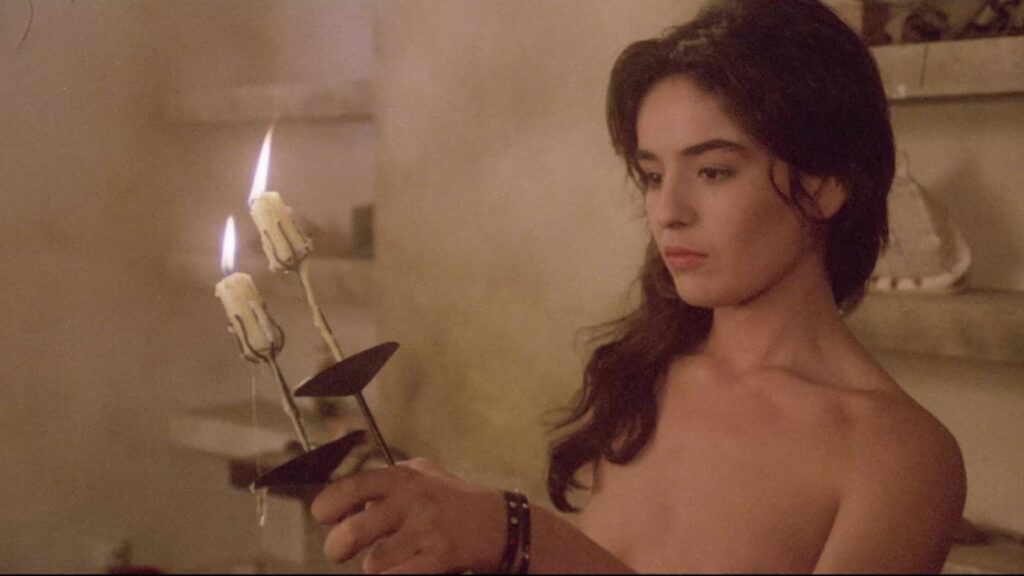
The Devil’s Honey (1986) finds director Lucio Fulci at his most excessive. The filmmaker has maximized all of his usual stylistic flourishes, rendering this boiler plate erotic thriller as some nightmarish fever dream. Lens flares, zooms, and focus pulls connect the past to the present; the erotic to the deadly; the male to the female.
The Devil’s Honey uses the blueprint of the revenge thriller to dive deep into the psychology of trauma. Fulci explores a toxic co-dependency while simultaneously fetishizing that relationships sexual violence. Jessica (Blanca Marsillach) is victim turned victimizer who is motivated at first by a misplaced sense of justice and then later by a need to bury her past.
Jessica’s German Shepherd Blaze is the physical manifestation of her fury. It is a fury that she believes to be directed at Dr. Simpson (Brett Halsey) but she comes to realize that it is actually directed at her late abusive lover Johnny (Stefano Madia). The cost of this revelation is the death of Blaze. At this turning point Jessica becomes less abusive towards her hostage and more self-destructive.
This journey into the internal life of Jessica is full of bizarre trappings and set pieces. Jessica pours hot candle wax on a chained Simpson in a dungeon and proclaims “I am fear, but you can call me Jessica”. The Devil’s Honey is a film that defies spatial and dramatic logic in favor of a subjective rendering of its psycho-sexual spectacles. Dolls, dogs, chains, and saxophones are among the fetish objects that populate Fulci’s cavalcade of sex, blood, and bondage.
The Devil’s Honey is Fulci returning to his earlier films like One On Top Of The Other (1969) but through the filter of the more broadly stylized The Beyond (1981) and Conquest (1983). The content of a Fulci erotic thriller hasn’t changed, only the look and execution has. The Devil’s Honey is a masterpiece that must be seen to be believed.
